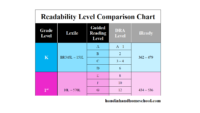Homeschooling a Child with Down Syndrome
Down syndrome is a genetic disorder caused by an extra chromosome that develops in utero. Children born with Down syndrome will experience a wide range of developmental delays. Down syndrome can result in some children having an intellectual disability, while others will only experience learning delays.
The key to successfully homeschooling a child with Down syndrome lies in understanding the link between physical and health problems associated with Down syndrome and their impact on learning. In understanding how learning can be challenged, parents can adapt their homeschool instruction to best meet their child’s special learning needs.
For example, chronic early childhood ear infections OR mild to moderate hearing loss inhibits a child’s ability to develop necessary phonological awareness skills, a necessary building block for the reading process. When receptive speech is muffled or distorted, a child is unable to naturally learn correct letter-sound associations. Adults may say the word “milk”, but the child’s hearing impairment may cause them to process /muck/ with the drink, because that is what they heard. When this happens, eventual phonics instruction will encounter the extra step of needing to break the incorrect sound association before the child can successfully read and pronounce “milk”.
Before you begin your homeschool journey, start with this chart that describes learning strengths and challenges children with Down syndrome may face. Next, read about general teaching strategies you can use to accommodate your child’s special learning needs. Finally, at the bottom of the page you’ll find links to help you find appropriate curriculum for your child with Down syndrome.
General Learning Profile for Children with Down Syndrome
Strengths |
Challenges |
|---|---|
| Receptive language (understanding what they hear) | Auditory processing deficits (ability to fully understand what they hear) |
| Visual learner | Speech and language delays |
| Pointing and guiding gestures | Gross and fine motor skills delays |
| Responds well to meaningful praise | Sensitive to failure |
| Learning within a group that fosters meaningful interaction | Short attention span |
Strategies for Homeschooling Your Child with Down Syndrome
Individualizing instructional strategies to a child’s strengths and weaknesses will help the child meet their full potential. Find some specific teaching strategies you can use when homeschooling your child with Down syndrome.
- Plan Short Lessons
If your child has a short attention span, chunk lessons into multiple 15-20 minute segments throughout the day. Plan for lots of breaks. Watch for behavioral cues that may indicate a loss in interest. It’s always easier to end a lesson early than to get into a power struggle with a child who has reached their maximum learning load.
- Keep It Simple and Routine
Simplifying language and creating scripts for how you teach certain subjects will help your child develop learning routines. The more predictability in your homeschool routines, the greater the opportunity for successful learning. For example, a sample script might be: “Now we’re going to work on math. What 3 things do we need for math? A pencil, our workbook, and our calculator.” Using this script before starting every math lesson will help your child start thinking about math before they even see their first number.
- Allow for Longer Response Times
Many children with Down syndrome may take longer to think through a question. What might seem like off-task behavior or ignoring a question, may actually be their need to process and think through an answer. If you feel the need to give timed tests, use fewer questions to ensure a greater chance of completion and success.
- Repeat, Repeat, and Repeat Again, If Necessary
Weak short term memory skills make following directions a challenge. It also makes memorizing sight words, math facts, and other information more difficult. You will probably find yourself needing to cheerfully repeat lessons often. If that is the case, you can use different sensory learning modes to help build stronger memory links with your child. Find ways to teach through all the senses: Sing songs. Trace letters in sand trays. Use whole body movements to practice writing.
- Make It Visual
Use visual calendars, checklists, and flow charts to help your child stay organized and to learn subject matter and life skills that require sequenced steps. Use consistent color coding that associates certain actions to specific words, such as green = start; yellow = check work; and red = stop or all done. While visual cues are helpful, be sure to keep visual clutter to a minimum, especially on worksheets. If you use printed words with your visuals, make the font a larger size.
- Use Adaptive Technology
Ipads can be a great tool for connecting your child to digital platforms that support teaching and special learning needs, but not all adaptive technology is high tech or costs $500+. For example, if your child has difficulty with grasping a pencil or exerting enough force to write clearly, choose a tool, like a felt tip marker, that allows your child to continue to exercise muscle tone while also indicating their answer choices. Another handy adaptive tool is your cell phones. Today’s smartphones have fantastic speech-to-text technology that helps many people transcribe their thoughts into written sentences. Teaching older children how to use speech-to-text technology on their own gives them the opportunity to successfully complete certain writing assignments independently.
- Provide Choice
All children have personal likes and dislikes. Offering developmentally appropriate learning options to any child helps with motivation and commitment to finishing the task. Even the youngest of children can be given some control over their learning by asking: Do you want to work on your math or science class first? As children develop skills and abilities, choices can extend to picking content, such as learning about animals or volcanoes and rocks and the types of assignments they work on.
- Integrate Learning With Real Life
Prioritize learning goals with real life applications as much as possible. For example, you can align certain self-care skills, such as brushing teeth with math lessons on telling time. Additionally, if you use a reward system with your child, you may decide to move over to using play or real money that can be traded in for “prizes”, rather than stickers. Create one visual reward chart that shows the value of different accomplishments and a second visual chart that shows the “cost” for available rewards. Children further along in their development can learn to add their money and make the decision to “save” for a bigger reward that may take longer to earn.
Learn More:
- Whole language or phonics? Picking a reading curriculum for your child with Down syndrome.
- Selecting a math curriculum for your child with Down syndrome.




